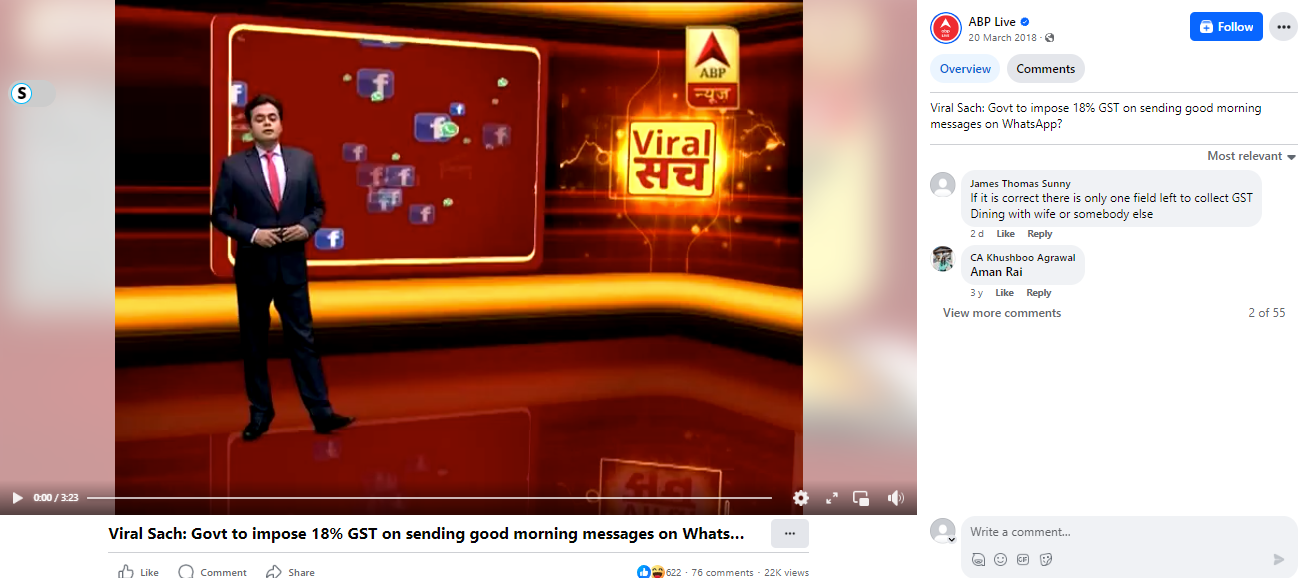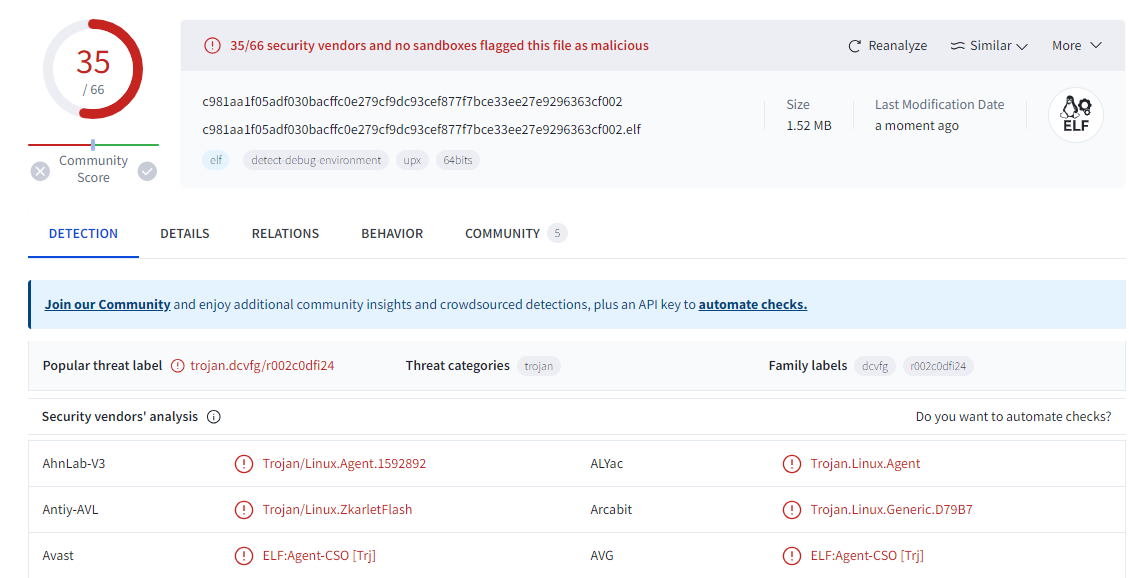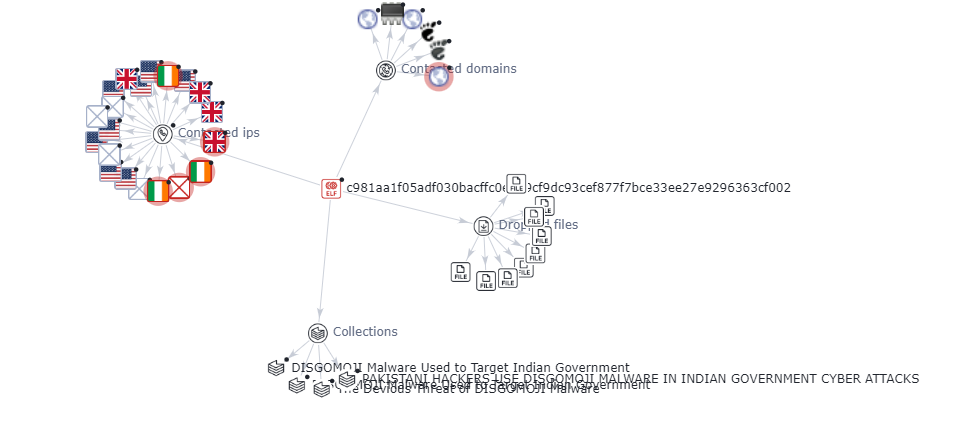#FactCheck - Viral Clip and Newspaper Article Claiming 18% GST on 'Good Morning' Messages Debunked
Executive Summary
A recent viral message on social media such as X and Facebook, claims that the Indian Government will start charging an 18% GST on "good morning" texts from April 1, 2024. This news is misinformation. The message includes a newspaper clipping and a video that was actually part of a fake news report from 2018. The newspaper article from Navbharat Times, published on March 2, 2018, was clearly intended as a joke. In addition to this, we also found a video of ABP News, originally aired on March 20, 2018, was part of a fact-checking segment that debunked the rumor of a GST on greetings.

Claims:
The claim circulating online suggests that the Government will start applying a 18% of GST on all "Good Morning" texts sent through mobile phones from 1st of April, this year. This tax would be added to the monthly mobile bills.




Fact Check:
When we received the news, we first did some relevant keyword searches regarding the news. We found a Facebook Video by ABP News titled Viral Sach: ‘Govt to impose 18% GST on sending good morning messages on WhatsApp?’


We have watched the full video and found out that the News is 6 years old. The Research Wing of CyberPeace Foundation also found the full version of the widely shared ABP News clip on its website, dated March 20, 2018. The video showed a newspaper clipping from Navbharat Times, published on March 2, 2018, which had a humorous article with the saying "Bura na mano, Holi hain." The recent viral image is a cutout image from ABP News that dates back to the year 2018.
Hence, the recent image that is spreading widely is Fake and Misleading.
Conclusion:
The viral message claiming that the government will impose GST (Goods and Services Tax) on "Good morning" messages is completely fake. The newspaper clipping used in the message is from an old comic article published by Navbharat Times, while the clip and image from ABP News have been taken out of context to spread false information.
Claim: India will introduce a Goods and Services Tax (GST) of 18% on all "good morning" messages sent through mobile phones from April 1, 2024.
Claimed on: Facebook, X
Fact Check: Fake, made as Comic article by Navbharat Times on 2 March 2018
Related Blogs

Executive Summary:
New Linux malware has been discovered by a cybersecurity firm Volexity, and this new strain of malware is being referred to as DISGOMOJI. A Pakistan-based threat actor alias ‘UTA0137’ has been identified as having espionage aims, with its primary focus on Indian government entities. Like other common forms of backdoors and botnets involved in different types of cyberattacks, DISGOMOJI, the malware allows the use of commands to capture screenshots, search for files to steal, spread additional payloads, and transfer files. DISGOMOJI uses Discord (messaging service) for Command & Control (C2) and uses emojis for C2 communication. This malware targets Linux operating systems.
The DISCOMOJI Malware:
- The DISGOMOJI malware opens a specific channel in a Discord server and every new channel corresponds to a new victim. This means that the attacker can communicate with the victim one at a time.
- This particular malware connects with the attacker-controlled Discord server using Emoji, a form of relay protocol. The attacker provides unique emojis as instructions, and the malware uses emojis as a feedback to the subsequent command status.
- For instance, the ‘camera with flash’ emoji is used to screenshots the device of the victim or to steal, the ‘fox’ emoji cracks all Firefox profiles, and the ‘skull’ emoji kills the malware process.
- This C2 communication is done using emojis to ensure messaging between infected contacts, and it is almost impossible for Discord to shut down the malware as it can always change the account details of Discord it is using once the maliciou server is blocked.
- The malware also has capabilities aside from the emoji-based C2 such as network probing, tunneling, and data theft that are needed to help the UTA0137 threat actor in achieving its espionage goals.
Specific emojis used for different commands by UTA0137:
- Camera with Flash (📸): Captures a picture of the target device’s screen as per the victim’s directions.
- Backhand Index Pointing Down (👇): Extracts files from the targeted device and sends them to the command channel in the form of attachments.
- Backhand Index Pointing Right (👉): This process involves sending a file found on the victim’s device to another web-hosted file storage service known as Oshi or oshi[. ]at.
- Backhand Index Pointing Left (👈): Sends a file from the victim’s device to transfer[. ]sh, which is an online service for sharing files on the Internet.
- Fire (🔥): Finds and transmits all files with certain extensions that exist on the victim’s device, such as *. txt, *. doc, *. xls, *. pdf, *. ppt, *. rtf, *. log, *. cfg, *. dat, *. db, *. mdb, *. odb, *. sql, *. json, *. xml, *. php, *. asp, *. pl, *. sh, *. py, *. ino, *. cpp, *. java,
- Fox (🦊): This works by compressing all Firefox related profiles in the affected device.
- Skull (💀): Kills the malware process in windows using ‘os. Exit()’
- Man Running (🏃♂️): Execute a command on a victim’s device. This command receives an argument, which is the command to execute.
- Index Pointing up (👆) : Upload a file to the victim's device. The file to upload is attached along with this emoji
Analysis:
The analysis was carried out for one of the indicator of compromised SHA-256 hash file- C981aa1f05adf030bacffc0e279cf9dc93cef877f7bce33ee27e9296363cf002.
It is found that most of the vendors have marked the file as trojan in virustotal and the graph explains the malicious nature of the contacted domains and IPs.


Discord & C2 Communication for UTA0137:
- Stealthiness: Discord is a well-known messaging platform used for different purposes, which means that sending any messages or files on the server should not attract suspicion. Such stealthiness makes it possible for UTA0137 to remain dormant for greater periods before launching an attack.
- Customization: UTA0137 connected to Discord is able to create specific channels for distinct victims on the server. Such a framework allows the attackers to communicate with each of the victims individually to make a process more accurate and efficient.
- Emoji-based protocol: For C2 communication, emojis really complicates the attempt that Discord might make to interfere with the operations of the malware. In case the malicious server gets banned, malware could easily be recovered, especially by using the Discord credentials from the C2 server.
- Persistence: The malware, as stated above, has the ability to perpetually exist to hack the system and withstand rebooting of systems so that the virus can continue to operate without being detected by the owner of the hacked system.
- Advanced capabilities: Other features of DISGOMOJI are the Network Map using Nmap scanner, network tunneling through Chisel and Ligolo and Data Exfiltration by File Sharing services. These capabilities thus help in aiding the espionage goals of UTA0137.
- Social engineering: The virus and the trojan can show the pop-up windows and prompt messages, for example the fake update for firefox and similar applications, where the user can be tricked into inputting the password.
- Dynamic credential fetching: The malware does not write the hardcoded values of the credentials in order to connect it to the discord server. This also inconveniences analysts as they are unable to easily locate the position of the C2 server.
- Bogus informational and error messages: They never show any real information or errors because they do not want one to decipher the malicious behavior easily.
Recommendations to mitigate the risk of UTA0137:
- Regularly Update Software and Firmware: It is essential to regularly update all the application software and firmware of different devices, particularly, routers, to prevent hackers from exploiting the discovered and disclosed flaws. This includes fixing bugs such as CVE-2024-3080 and CVE-2024-3912 on ASUS routers, which basically entails solving a set of problems.
- Implement Multi-Factor Authentication: There are statistics that show how often user accounts are attacked, it is important to incorporate multi-factor authentication to further secure the accounts.
- Deploy Advanced Malware Protection: Provide robust guard that will help the user recognize and prevent the execution of the DISGOMOJI malware and similar threats.
- Enhance Network Segmentation: Utilize stringent network isolation mechanisms that seek to compartmentalize the key systems and data from the rest of the network in order to minimize the attack exposure.
- Monitor Network Activity: Scanning Network hour to hour for identifying and handling the security breach and the tools such as Nmap, Chisel, Ligolo etc can be used.
- Utilize Threat Intelligence: To leverage advanced threats intelligence which will help you acquire knowledge on previous threats and vulnerabilities and take informed actions.
- Secure Communication Channels: Mitigate the problem of the leakage of developers’ credentials and ways of engaging with the discord through loss of contact to prevent abusing attacks or gaining control over Discord as an attack vector.
- Enforce Access Control: Regularly review and update the user authentication processes by adopting stricter access control measures that will allow only the right personnel to access the right systems and information.
- Conduct Regular Security Audits: It is important to engage in security audits periodically in an effort to check some of the weaknesses present within the network or systems.
- Implement Incident Response Plan: Conduct a risk assessment, based on that design and establish an efficient incident response kit that helps in the early identification, isolation, and management of security breaches.
- Educate Users: Educate users on cybersecurity hygiene, opportunities to strengthen affinity with the University, and conduct retraining on threats like phishing and social engineering.
Conclusion:
The new threat actor named UTA0137 from Pakistan who was utilizing DISGOMOJI malware to attack Indian government institutions using embedded emojis with a command line through the Discord app was discovered by Volexity. It has the capability to exfiltrate and aims to steal the data of government entities. The UTA0137 was continuously improved over time to permanently communicate with victims. It underlines the necessity of having strong protection from viruses and hacker attacks, using secure passwords and unique codes every time, updating the software more often and having high-level anti-malware tools. Organizations can minimize advanced threats, the likes of DISGOMOJI and protect sensitive data by improving network segmentation, continuous monitoring of activities, and users’ awareness.
References:
https://otx.alienvault.com/pulse/66712446e23b1d14e4f293eb
https://thehackernews.com/2024/06/pakistani-hackers-use-disgomoji-malware.html?m=1
https://cybernews.com/news/hackers-using-emojis-to-command-malware/
https://www.volexity.com/blog/2024/06/13/disgomoji-malware-used-to-target-indian-government/
.webp)
Introduction:
The Federal Bureau of Investigation (FBI) focuses on threats and is an intelligence-driven agency with both law enforcement and intelligence responsibilities. The FBI has the power and duty to look into certain offences that are entrusted to it and to offer other law enforcement agencies cooperation services including fingerprint identification, lab tests, and training. In order to support its own investigations as well as those of its collaborators and to better comprehend and address the security dangers facing the United States, the FBI also gathers, disseminates, and analyzes intelligence.
The FBI’s Internet Crime Complaint Center (IC3) Functions combating cybercrime:
- Collection: Internet crime victims can report incidents and notify the relevant authorities of potential illicit Internet behavior using the IC3. Law enforcement frequently advises and directs victims to use www.ic3.gov to submit a complaint.
- Analysis: To find new dangers and trends, the IC3 examines and examines data that users submit via its website.
- Public Awareness: The website posts public service announcements, business alerts, and other publications outlining specific frauds. Helps to raise awareness and make people become aware of Internet crimes and how to stay protected.
- Referrals: The IC3 compiles relevant complaints to create referrals, which are sent to national, international, local, and state law enforcement agencies for possible investigation. If law enforcement conducts an investigation and finds evidence of a crime, the offender may face legal repercussions.
Alarming increase in cyber crime cases:
In the recently released 2022 Internet Crime Report by the FBI's Internet Crime Complaint Center (IC3), the statistics paint a concerning picture of cybercrime in the United States. FBI’s Internet Crime Complaint Center (IC3) received 39,416 cases of extortion in 2022. The number of cases in 2021 stood at 39,360.
FBI officials emphasize the growing scope and sophistication of cyber-enabled crimes, which come from around the world. They highlight the importance of reporting incidents to IC3 and stress the role of law enforcement and private-sector partnerships.
About Internet Crime Complaint Center IC3:
IC3 was established in May 2000 by the FBI to receive complaints related to internet crimes.
It has received over 7.3 million complaints since its inception, averaging around 651,800 complaints per year over the last five years. IC3's mission is to provide the public with a reliable reporting mechanism for suspected cyber-enabled criminal activity and to collaborate with law enforcement and industry partners.
The FBI encourages the public to regularly review consumer and industry alerts published by IC3. An victim of an internet crime are urged to submit a complaint to IC3, and can also file a complaint on behalf of another person. These statistics underscore the ever-evolving and expanding threat of cybercrime and the importance of vigilance and reporting to combat this growing challenge.
What is sextortion?
The use or threatened use of a sexual image or video of another person without that person’s consent, derived from online encounters or social media websites or applications, primarily to extort money from that person or asking for sexual favours and giving warning to distribute that picture or video to that person’s friends, acquaintances, spouse, partner, or co-workers or in public domain.
Sextortion is an online crime that can be understood as, when an bad actor coerces a young person into creating or sharing a sexual image or video of themselves and then uses it to get something from such young person, such as other sexual images, money, or even sexual favours. Reports highlights that more and more kids are being blackmailed in this way. Sextortion can also happen to adults. Sextortion can also take place by taking your pictures from social media account and converting those pictures into sexually explicit content by morphing such images or creating deepfake by miusing deepfake technologies.
Sextortion in the age of AI and advanced technologies:
AI and deep fake technology make sextortion even more dangerous and pernicious. A perpetrator can now produce a high-quality deep fake that convincingly shows a victim engaged in explicit acts — even if the person has not done any such thing.
Legal Measures available in cases of sextortion:
In India, cybersecurity is governed primarily by the Indian Penal Code (IPC) and the Information Technology Act, 2000 (IT Act). Addressing cyber crimes such as hacking, identity theft, and the publication of obscene material online, sextortion and other cyber crimes. The IT Act covers various aspects of electronic governance and e-commerce, with providing provisions for defining such offences and providing punishment for such offences.
Recently Digital Personal Data Protection Act, 2023 has been enacted by the Indian Government to protect the digital personal data of the Individuals. These laws collectively establish the legal framework for cybersecurity and cybercrime prevention in India. Victims are urged to report the crime to local law enforcement and its cybercrime divisions. Law enforcement will investigate sextortion cases reports and will undertake appropriate legal action.
How to stay protected from evolving cases of sextortion: Best Practices:
- Report the Crime to law enforcement agency and social media platform or Internet service provider.
- Enable Two-step verification as an extra layer of protection.
- Keep your laptop Webcams covered when not in use.
- Stay protected from malware and phishing Attacks.
- Protect your personal information on your social media account, and also monitor your social media accounts in order to identify any suspicious activity. You can also set and review privacy settings of your social media accounts.
Conclusion:
Sextortion cases has been increased in recent time. Knowing the risk, being aware of rules and regulations, and by following best practices will help in preventing such crime and help you to stay safe and also avoid the chance of being victimized. It is important to spreading awareness about such growing cyber crimes and empowering the people to report it and it is also significant to provide support to victims. Let’s all unite in order to fight against such cyber crimes and also to make life a safer place on the internet or digital space.
References:
- https://www.ic3.gov/Media/PDF/AnnualReport/2022_IC3ElderFraudReport.pdf
- https://octillolaw.com/insights/fbi-ic3-releases-2022-internet-crime-report/
- https://www.iafci.org/app_themes/docs/Federal%20Agency/2022_IC3Report.pdf
.webp)
Executive Summary:
A widely used news on social media is that a 3D model of Chanakya, supposedly made by Magadha DS University matches with MS Dhoni. However, fact-checking reveals that it is a 3D model of MS Dhoni not Chanakya. This MS Dhoni-3D model was created by artist Ankur Khatri and Magadha DS University does not appear to exist in the World. Khatri uploaded the model on ArtStation, calling it an MS Dhoni similarity study.

Claims:
The image being shared is claimed to be a 3D rendering of the ancient philosopher Chanakya created by Magadha DS University. However, people are noticing a striking similarity to the Indian cricketer MS Dhoni in the image.



Fact Check:
After receiving the post, we ran a reverse image search on the image. We landed on a Portfolio of a freelance character model named Ankur Khatri. We found the viral image over there and he gave a headline to the work as “MS Dhoni likeness study”. We also found some other character models in his portfolio.



Subsequently, we searched for the mentioned University which was named as Magadha DS University. But found no University with the same name, instead the name is Magadh University and it is located in Bodhgaya, Bihar. We searched the internet for any model, made by Magadh University but found nothing. The next step was to conduct an analysis on the Freelance Character artist profile, where we found that he has a dedicated Instagram channel where he posted a detailed video of his creative process that resulted in the MS Dhoni character model.

We concluded that the viral image is not a reconstruction of Indian philosopher Chanakya but a reconstruction of Cricketer MS Dhoni created by an artist named Ankur Khatri, not any University named Magadha DS.
Conclusion:
The viral claim that the 3D model is a recreation of the ancient philosopher Chanakya by a university called Magadha DS University is False and Misleading. In reality, the model is a digital artwork of former Indian cricket captain MS Dhoni, created by artist Ankur Khatri. There is no evidence of a Magadha DS University existence. There is a university named Magadh University in Bodh Gaya, Bihar despite its similar name, we found no evidence in the model's creation. Therefore, the claim is debunked, and the image is confirmed to be a depiction of MS Dhoni, not Chanakya.


